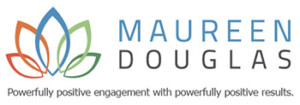When the potential for trouble arises do you take a “wait and see” approach or do you get ahead of it in an attempt to cut problems off at the pass? Trouble could be anything that puts you or your organization in a position requiring some damage control: a product flaw that must be addressed; a large-scale capitol project that will cause public inconvenience; or a rate increase that your customers aren’t expecting, to list just a few.
Undoubtedly, there are folks who believe that the “wait and see” approach has some merit. Sometimes our audience isn’t paying close enough attention to notice or the uproar dies down almost as fast as it ramped up. But nowadays that approach is its own form of risk-taking — an exercise in reputation roulette, rather than strategic issues management.
Occasionally we all mess up. But the rise and speed of social media means that our mess-ups and the public’s reaction to them can go viral in a heartbeat. As frustration grows, you can hear the public outcry of, “Why didn’t they tell us sooner?”
And why not tell us sooner? Talking about problems, challenges or changes BEFORE they occur doesn’t make them disappear, but it does give people a chance to better understand and prepare for the situation.
When I was working on the 2010 Olympic and Paralympic Winter Games, we knew that the scope of Games-time operations would cause inconveniences for businesses and residents who lived or worked close to the Games venues. But instead of staying quiet on the challenges, we got seriously proactive. We formed the Operations Engagement Team (OET), made up of communications specialists and operations staff. The OET worked directly with impacted businesses and residents to find mutually agreeable solutions and ways to minimize the disruptions to their daily lives.
We sat down with those impacted and outlined the problems likely to occur. We told them the truth about how they would be inconvenienced. We asked for their help in working through the challenges in the short-term, for the good of the Games in the long-term. We discussed compromises and solutions. Sometimes the people impacted had better ideas than we did on how to resolve the problems. Our proactive approach earned the public’s trust so they were willing to be part of the solution.
The process wasn’t without its bumps, but we it was infinitely better than the “wait and see” approach. We wanted people to be prepared and equipped to meet the challenges ahead. We wanted them engaged and enthusiastic about the Games. And we wanted to build relationships based on trust and shared problem-solving before the problems actually occurred. So when additional challenges occurred during Games-time we already had trusted relationships in place, making problem-solving much more efficient. Rather than risking our reputation, we enhanced it.
The big lesson: Don’t gamble with “wait and see”. Share your challenges and your truth early on to foster an environment for positive and shared problem-solving. It’s a safe bet.
~ Mo Douglas
Sign up for the weekly “Truth Tuesdays” blog or for a daily dose of truth, click here:

